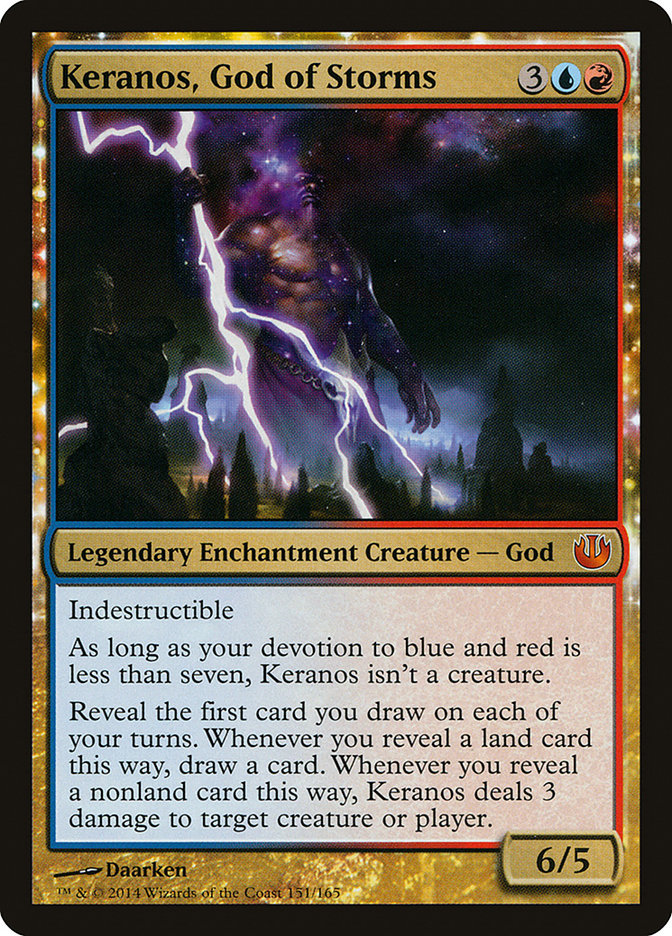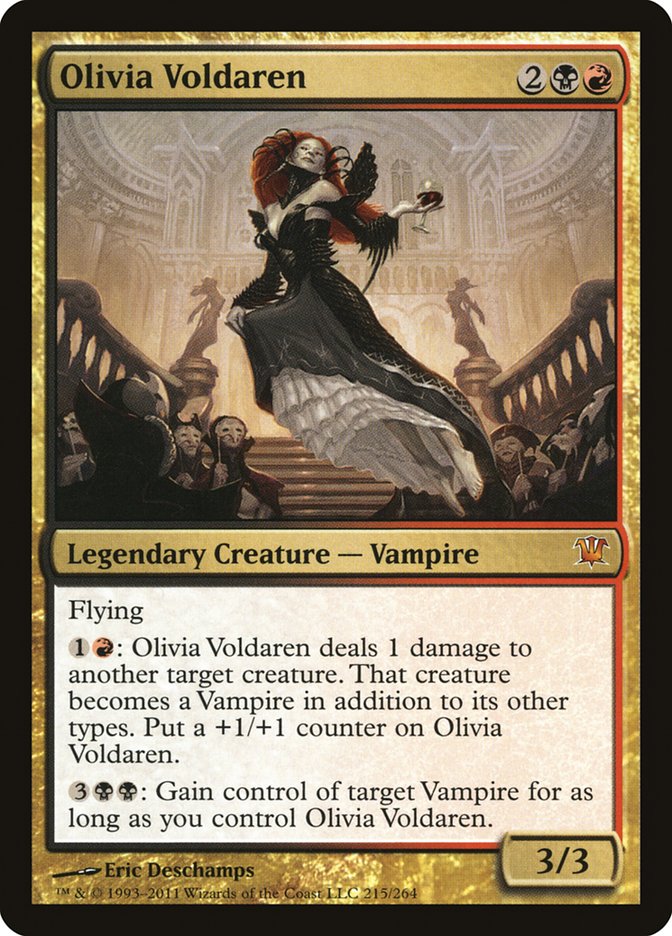With the Season Two Invitational this weekend and Grand Prix Charlotte the next, everyone’s focus is on Modern. The last time this happened was in February
at Pro Tour Fate Reforged where various flavors of Abzan, Splinter Twin, Burn, and Infect were heavily played and successful.
Well times have changed. Dragons of Tarkir has significantly altered the Modern landscape, in large part due to one card:
It slices. It dices. It has a blender attachment. I think it will get you a date for prom if you ask nicely. This card does seemingly everything while
providing value for the low cost of three mana.
Exploiting the metagame as it shifts to accept and combat Kolaghan’s Command as a pillar of the format is the key for having Modern success over these next
two weekends.
So what are our options? I see three viable plans: Join Them, Go Over Them, Go Under Them.
Join Them
Kolaghan’s Command is a great card, so why bother fighting it? Many people will move to the dark side and that is perfectly reasonable. The metagame is
warping around Kolaghan’s Command, which makes a strong case for simply playing it yourself.
The primary decks that are utilizing Kolaghan’s Command are Jund and
the various Grixis decks. (Delver,Twin, Control) If you play one of these decks, the key to success is
having a good plan against the mirror/pseudo-mirrors.
All of these decks are prepared to play games of attrition, even if the Delver and Twin decks incorporate aggressive and combo elements, respectively.
Traditionally, the mirrors have seen both players try to cut their least powerful cards for trump cards that can take over a game even if you are behind on
resources.
Since these cards are typically very expensive, they need to be resilient to commonly played removal spells. That means that the old standby Batterskull
takes a huge hit in the new metagame, and I would advise against leaning on it in Kolaghan’s Command mirrors.
The big winner in all of this is Keranos, God of Storms. Kolaghan’s Command pushes the midrange decks even further in the attrition direction, lengthening
the games and allowing you more time to cast a five mana spell with no immediate board impact. Once Keranos is in play, all you need to do is protect your
life total and the game will end in your favor–exactly what you’re looking for in a trump card.
The other card I like in this role is Olivia Voldaren. At six mana, she protects herself from Lightning Bolt, and she will take over the game if left
unchecked. While she is vulnerable to hard removal like Terminate and Murderous Cut, at four mana she is not as much of a tempo sink, and you have discard
to protect her from such a narrow range of cards. I also like that she can do good work against small creature decks like Infect and Affinity so you can
get an extra mirror trump without sacrificing a lot in other matchups.
It is going to be a midrange world for the next couple of weeks, and if you’re anything like me, you would rather play anything but midrange. So these next
two sections are for you. Fight the power.
Go Over Them
Kolaghan’s Command may be great value, but it is far from the most powerful option in the Modern format. There are many decks that can simply ignore the
incremental value Kolaghan’s Command decks seek to gain with the most powerful trump cards of the last twelve years.
The first of these trumps is Primeval Titan in Amulet Bloom:
Creatures (7)
Lands (27)
Spells (26)

Fittingly, Primeval Titan was used when it was in Standard to trump Bloodbraid Elf Jund, albeit back then he was serving a much more straightforward
purpose of finding many copies of Valakut, the Molten Pinnacle and then plenty of Mountains to trigger them.
It may seem strange to suggest playing a deck that relies on an artifact to combat Kolaghan’s Command, but against midrange decks, Amulet Bloom can easily
play a ramp gameplan, especially if the opponent decides to aggressively hold up Command mana.
If they do not hold up Command mana, you can simply hold back your Amulet of Vigor until you can kill them on the turn you play it. The power of the deck
forces your opponent to play themselves out of position, so with careful play you can sidestep their relevant interaction.
The speed of Amulet Bloom also means that some percentage of the time will be left looking at a board of one or two lands and an uncastable Kolaghan’s
Command in hand as you are attacking with a hasty, double striking giant.
Primeval Titan is a messed up Magic card, kids.
But maybe you would rather blow up all of your opponent’s lands rather than find more of your own. Modern still has you covered. Or rather, Karn Liberated
has you covered. It may be time to Tron people again:
Creatures (5)
Planeswalkers (6)
Lands (20)
Spells (29)
- 3 Pyroclasm
- 4 Oblivion Stone
- 4 Sylvan Scrying
- 4 Chromatic Sphere
- 4 Chromatic Star
- 2 Relic of Progenitus
- 4 Expedition Map
- 4 Ancient Stirrings
Sideboard

Tron has historically been very good against B/G/X midrange decks, and I do not think casting Kolaghan’s Command against Karn Liberated, Wurmcoil Engine,
and Emrakul, the Aeons Torn is going to change that.
The one adjustment I would make is to be more judicious about exposing Oblivion Stone, but otherwise it seems as though nothing has changed. The shift from
Abzan to Jund even leaves the B/G/X decks without their best sideboard option in Stony Silence.
Moreover, the rise of midrange decks has been followed by a decline in Splinter Twin decks, which are excellent against Tron.
It has also gained several good matchups from the emergence of Collected Company. Birthing Pod decks were always poor against Tron, and Collected Company
is a significant downgrade. The change does allow those decks to sideboard Stony Silence, but that will not be enough to salvage the matchup.
In case you couldn’t tell, I really like Tron right now.
Go Under Them
In order to leverage their resource generating cards, the Kolaghan’s Command decks need time. Moreover, as they look to fight mirrors all day, their decks
will inbreed to form slower, clunkier versions of themselves. It may seem cheesy, but it is completely viable to come out quickly and kill them before
their more powerful cards come online.
Killing someone when they have three or four great cards in their hand is always a great feeling, so here are two options for doing just that.
The first is Burn:
Creatures (14)
Lands (19)
Spells (27)

The creature base of Goblin Guide, Monastery Swiftspear, and Eidolon of the Great Revel all get attacks or guaranteed damage before dying to Command, and
drawing an extra card or two is much less effective against a deck that only cares about life totals, especially if those cards come from a Dark Confidant.
The creatures do get worse against Lightning Bolt, which is a staple in Kolaghan’s Command decks, so I think it is time to cut Grim Lavamancer. Trading one
for one is horrible for Burn, and Grim Lavamancer is the card that most often leads to those exchanges.
Also, Command and Bolt do a good job of suppressing small creatures, making Grim Lavamancer less effective.
The midrange shift also helps Burn in some subtle ways. Fewer Abzan decks means fewer Siege Rhinos and Timely Reinforcements, while the move from U/R Twin
to Grixis Twin means a less reliable combo and a more painful manabase.
My primary concern for Burn is actually not Kolaghan’s Command, but Collected Company. Kitchen Finks and Kor Firewalker with plenty of ways to find them is
going to be tough, but containing their mana creatures with Searing Blaze and Searing Blood should free up some time to count to twenty.
The second option is completely counterintuitive:
Creatures (29)
- 4 Arcbound Ravager
- 4 Ornithopter
- 2 Master of Etherium
- 3 Steel Overseer
- 3 Memnite
- 2 Etched Champion
- 4 Signal Pest
- 3 Spellskite
- 4 Vault Skirge
Lands (16)
Spells (15)
Sideboard

How could Affinity possibly be good in a field flush with maindeck artifact removal?
The immediate reaction to a maindeck “hate” card will correctly be a decline in the preyed upon deck. But once players know Affinity is on the decline,
they will be tempted to trim their best hate (Stony Silence, Ancient Grudge, Vandalblast) in order to tackle more important matchups.
At that point you can gain enough in the sideboard games to overcome your worse game 1s. And there is nothing better than catching a field while
unprepared. Still, this is an incredibly difficult metagame dynamic to gauge, so do not submit this deck without careful consideration.
As I mentioned earlier, the midrange decks will become slower as they become more popular, and thus, mirrors become more likely. This means the window for
this strategy is slower to open than the others.
Since you need to catch your opponents unprepared, the window is also quick to close, especially with linear decks like Burn and Affinity. That makes these
decks high-risk, high-reward options, but you know what they say: fortune favors the bold.
Now it is important to note that these lists are far from exhaustive. There are several other options in Modern for each strategy, but you really should
fall into one of these categories. If not, you better have a very good and thoroughly tested plan for the Kolaghan’s Command decks.




